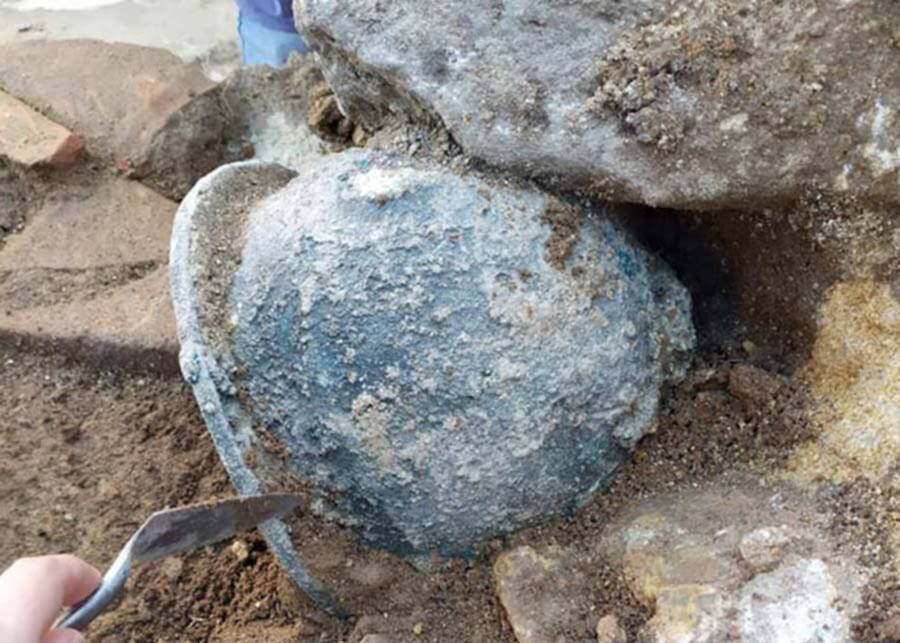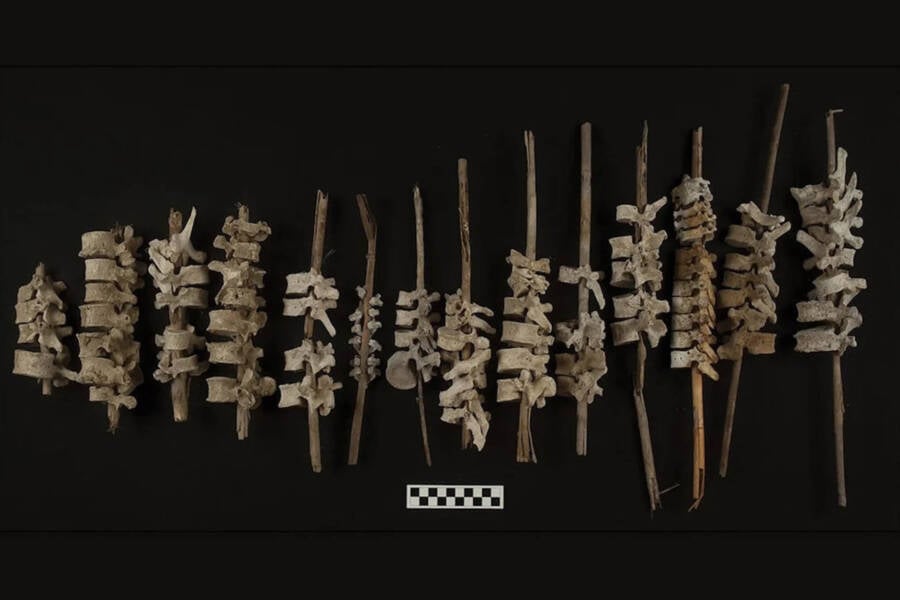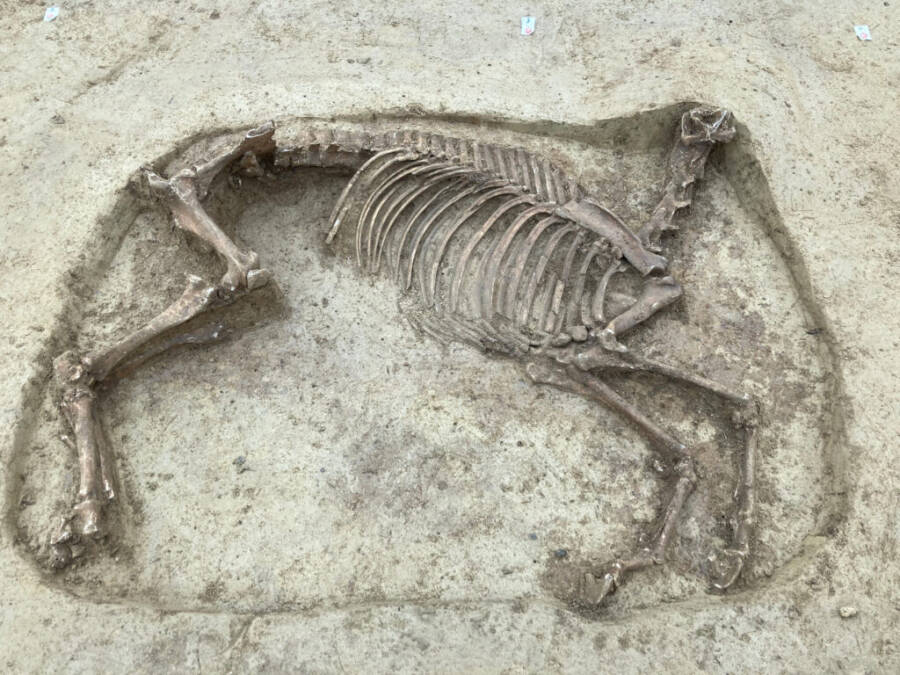Ancient Greek warriors' helmets unearthed in Italy, spines threaded around poles found in Peru, headless medieval horse uncovered in Germany.
Archaeologists In Italy Find Two Intact Helmets Worn By Ancient Greek Warriors 2,500 Years Ago

Parco Archeologico PaestumThe helmets were found at the Acropolis of Elea-Velia, a 60-foot long temple built high atop a terrace in the Cilento region of southern Italy during the sixth century B.C.E.
In approximately 540 B.C.E., the Greeks built the Acropolis of Elea-Velia, a temple constructed high atop a terrace in the Cilento region of southern Italy. Measuring in at 60 feet long by 23 feet wide, this massive and sturdily-built structure served as a sacred site for centuries and remains one of the best-preserved temples of its kind that’s ever been uncovered.
Archaeologists recently digging at this temple have discovered a wealth of treasures dating back to the time of its construction. They’ve unearthed weapons, armor, painted ceramics, inscribed vases, and various offerings to the goddess Athena. But perhaps most impressive of all are the two intact warriors’ helmets used in battle some 2,500 years ago.
Read on here.
Archaeologists In Peru Discover A 16th-Century Grave Containing Nearly 200 Human Spines Threaded Onto Sticks

C. O’SheaA collection of the spines found threaded on posts in Peru.
In Peru’s Chincha Valley, local farmers have long considered spines threaded onto posts as “ancient objects.” But it was only recently that archeologists began studying the phenomenon of “vertebrae on posts” in depth. Now, they’ve discovered nearly 200 examples — and they think they know how the practice developed.
Dig deeper in this report.
1,400-Year-Old Headless Horse Discovered Buried Alongside Rider In Germany

State Office for the Preservation of Monuments in the Regional Council of Stuttgart/ F. DammingerThe decapitation of the horse was likely part of a burial ceremony.
Amid a medieval burial site of around 100 graves in Germany, archeologists came across a surprising discovery. Buried alongside the human skeletons, they found a horse missing its head.
The horse’s owner, found nearby, was likely a social elite of the Merovingian Dynasty, which ruled over parts of France, Germany, and Switzerland between 476 and 750 C.E.
See more here.





